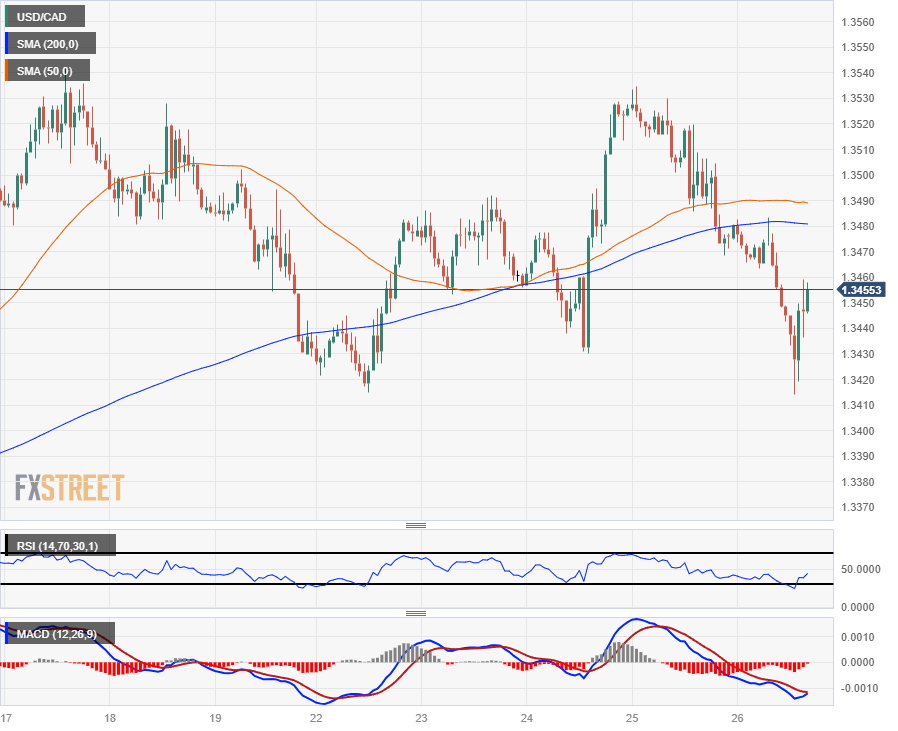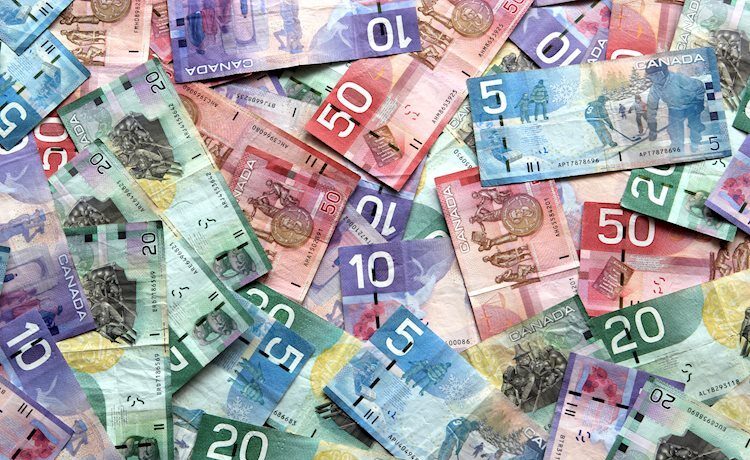- Canadian Dollar finds some room against the USD post-PCE print.
- Canada absent from the economic calendar until next Wednesday.
- Market focus to pivot toward upcoming Fed rate call.
The Canadian Dollar (CAD) found some space on Friday, bolstered by climbing Crude Oil markets and clawing back some of the week’s losses. The US Dollar Index (DXY) broadly fell early Friday ahead of US Personal Consumption Expenditure (PCE) figures, and the DXY saw a choppy recovery after the annualized Core PCE Price Index slid more than expected.
Canada is absent on the economic calendar until next Wednesday’s Canadian Gross Domestic Product (GDP) print, but effects are likely to be muted with broader markets focused on next week’s US Federal Reserve rate call and monetary policy statement.
Daily digest market movers: Canadian Dollar pares some of the week’s losses on Friday
- US Core PCE inflation printed at 2.9% YoY on Friday versus 3.0% forecast, 3.2% previously.
- Despite easing in Fed’s preferred inflation metric, US Personal Spending rose 0.7% MoM compared to the 0.4% forecast and 0.4% previous (revised up from 0.2%).
- US Pending Home Sales also rose 8.3% in December, well above the 1.5% forecast and the previous month’s -0.3% (revised down from 0.0%).
- US inflation continues to ease, but stubbornly robust consumption continues to weigh on rate cut hopes.
- Swap market bets of a Fed rate cut in March declined to 46% post-PCE release, falling back below 50%.
- According to the CME’s FedWatch Tool, markets are now pricing in May for the first rate cut.
- Next week’s Canadian MoM GDP for November expected to improve to 0.1% from 0.0%.
- Canada GDP to be engulfed by Fed rate call and Federal Open Market Committee (FOMC) press conference.
- Crude Oil markets saw new eight-week highs as supply concerns weigh on energy investors, West Texas Intermediate (WTI) US Crude Oil tests $77.00 per barrel on Friday.
Canadian Dollar price today
The table below shows the percentage change of Canadian Dollar (CAD) against listed major currencies today. Canadian Dollar was the strongest against the Japanese Yen.
| USD | EUR | GBP | CAD | AUD | JPY | NZD | CHF | |
| USD | -0.15% | -0.05% | -0.16% | -0.01% | 0.14% | 0.13% | -0.41% | |
| EUR | 0.14% | 0.09% | 0.00% | 0.14% | 0.32% | 0.27% | -0.26% | |
| GBP | 0.06% | -0.09% | -0.10% | 0.04% | 0.23% | 0.21% | -0.34% | |
| CAD | 0.14% | 0.01% | 0.09% | 0.12% | 0.30% | 0.28% | -0.25% | |
| AUD | 0.01% | -0.15% | -0.06% | -0.15% | 0.16% | 0.14% | -0.40% | |
| JPY | -0.16% | -0.32% | -0.21% | -0.31% | -0.18% | -0.04% | -0.56% | |
| NZD | -0.11% | -0.28% | -0.17% | -0.29% | -0.13% | 0.03% | -0.53% | |
| CHF | 0.41% | 0.26% | 0.36% | 0.27% | 0.39% | 0.55% | 0.55% |
The heat map shows percentage changes of major currencies against each other. The base currency is picked from the left column, while the quote currency is picked from the top row. For example, if you pick the Euro from the left column and move along the horizontal line to the Japanese Yen, the percentage change displayed in the box will represent EUR (base)/JPY (quote).
Technical Analysis: Canadian Dollar in the green for Friday but still soft on the week
The Canadian Dollar (CAD) found some room heading into the closing bell, gaining a third of a percent against the Japanese Yen (JPY) and around a quarter of a percent against the New Zealand Dollar (NZD). The CAD is flat on the day against the Euro (EUR) and shed a quarter of a percent against the rebounding Swiss Franc (CHF).
The Canadian Dollar pushed back against the US Dollar on Friday as USD/CAD fell to an intraday low of 1.3414, but a broad-market Greenback recovery pulled the pair back into the 1.3450 region.
The USD/CAD’s near-term decline from the week’s peak near 1.3530 saw the pair slide around 0.9% peak-to-trough, and the pair is now recovering toward the 200-hour Simple Moving Average (SMA) near 1.3480. On the top end, an intraday technical resistance zone is priced in around 1.3490.
A halting Friday decline leaves USD/CAD at risk of slumping back into a near-term congestion zone as the 50-day and 200-day SMAs consolidate into a technical swamp near the 1.3500 term.
USD/CAD Hourly Chart
USD/CAD Daily Chart
Interest rates FAQs
Interest rates are charged by financial institutions on loans to borrowers and are paid as interest to savers and depositors. They are influenced by base lending rates, which are set by central banks in response to changes in the economy. Central banks normally have a mandate to ensure price stability, which in most cases means targeting a core inflation rate of around 2%.
If inflation falls below target the central bank may cut base lending rates, with a view to stimulating lending and boosting the economy. If inflation rises substantially above 2% it normally results in the central bank raising base lending rates in an attempt to lower inflation.
Higher interest rates generally help strengthen a country’s currency as they make it a more attractive place for global investors to park their money.
Higher interest rates overall weigh on the price of Gold because they increase the opportunity cost of holding Gold instead of investing in an interest-bearing asset or placing cash in the bank.
If interest rates are high that usually pushes up the price of the US Dollar (USD), and since Gold is priced in Dollars, this has the effect of lowering the price of Gold.
The Fed funds rate is the overnight rate at which US banks lend to each other. It is the oft-quoted headline rate set by the Federal Reserve at its FOMC meetings. It is set as a range, for example 4.75%-5.00%, though the upper limit (in that case 5.00%) is the quoted figure.
Market expectations for future Fed funds rate are tracked by the CME FedWatch tool, which shapes how many financial markets behave in anticipation of future Federal Reserve monetary policy decisions.

